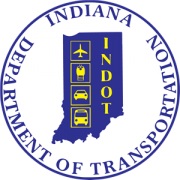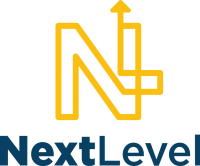Frequently Asked Questions
TheLloyd4U includes more than a dozen improvement projects along the Lloyd Expressway. The projects extend from one end of Vanderburgh County to the other, from Posey County Line Road to Cross Pointe Boulevard.
TheLloyd4U will include intersection improvements, bridge replacements, pavement replacements and more. The improvements projects will make the Lloyd work better for drivers. Innovative intersections will be used to improve safety and mobility while maintaining accessibility to businesses and homes along the Lloyd Expressway.
The Project Team gathered information to develop solutions that reduce conflict points, enhance traffic flow and improve safety. Activities included assessment of environmental impacts, traffic analysis, survey work, road design and bridge design. The Project Team received signed authorization to proceed to construction which is anticipated to begin in spring 2024.
The Project Team finalized design and right-of-way needs. The projects are being let for construction with activity anticipated to begin in spring 2024. TheLloyd4U improvements will be phased to minimized disruptions in service. Construction is anticipated to be complete in 2028. Construction will begin on the far westside and far eastside.
The anticipated schedule for all improvements can be found here (LINK).
- Sign up for text or email updates so you are aware of changes as they happen.
- At least one lane of traffic will always be open in each direction. No portion of the Lloyd will ever be completely closed. However, reduced lanes will lead to congestion, especially at peak travel times. Plan your trips for off peak times or use alternate routes to avoid the Lloyd.
- Be polite and learn how to zipper merge! The zipper merge is used when two lanes of traffic reduce to one. Rather than queuing up in the lane that will remain open, vehicles should stay in BOTH lanes until the lanes reduce and TAKE TURNS entering the open lane. You aren’t being impolite or cutting the line by keeping both lanes filled. Instead, you are helping ensure that traffic doesn’t back up into the next intersection causing traffic jams. Add link to zipper merge video.
The Lloyd4U improvements will be phased to minimize disruptions in service. Construction is anticipated to begin in spring 2024 and continue until 2028. Construction will begin at the Posey County Line Road to Ingle Avenue. The anticipated schedule for all improvements can be found here.
The project has developed maintenance of traffic plans to help keep traffic flowing during construction. The team will work closely with business owners, local government officials, school officials and emergency personnel to share information, listen to their questions and address their concerns.
Innovative intersections remove left turns from the main intersection. This is done by organizing traffic and providing another way to make the same movement. The result is fewer conflict points, improved safety, improved traffic flow and maintained accessibility. Innovative intersections planned for TheLloyd4u include displaced left turns, boulevard left turns and a hybrid solution.
Vehicles turning left move to a dedicated lane on the other side of the road, with a signal, before they enter the intersection. There’s no need for a left turn signal at the main intersection. Left-turn traffic moves with traffic on the Lloyd Expressway. This is also known as a continuous flow intersection. Watch a video excerpt below from the Federal Highway Administration to get a better idea of how this type of intersections works.
Vehicles wanting to go left off the Lloyd Expressway go through the intersection, make a U-Turn and then turn right. This removes left turns at the main intersection. All boulevard left turns planned for TheLloyd4U include a traffic signal at a dedicated U-turn in the median to safely make the turn. This is also known as a median U-Turn. Below is a video excerpt from the Federal Highway Administration to get a better idea of how this type of intersections works.
A hybrid solution includes elements from both a displaced left turn and boulevard left turn. An intersection’s proximity to ramps, roadways and other factors means a combination of elements from the two work best together to improve safety, performance and wait times.
A corridor-wide map shows what type of improvement is planned at each intersection – minor improvement, major improvement, pavement replacement, bridge replacement or intersection modification. Redefined design concepts for the eastside (LINK) and westside (LINK) were shared at public hearings in March and September of 2023, respectively.
The smaller footprint of the innovative intersections designs, means no homes or business will need to be acquired for TheLloyd4U improvements. Right-of-way needs consist of smaller strips of land.
Yes, a handful of permanent closures will be made to address safety concerns in the area. These locations are Pennsylvania Street and Wabash Avenue, N. 12th Street at Lloyd, N. Lemke Avenue at Lloyd and S. Ingle Avenue at Lloyd.
INDOT plans to invest more than $150 million in improvements to make the Lloyd Expressway more efficient and safer for motorist to navigate. Funding for the projects has been approved.
Currently, drivers exiting I-69 south that head westbound on the Lloyd Expressway must merge and cross three lanes of traffic to turn left on Cross Pointe Boulevard.
TheLloyd4U will reconfigure I-69 ramps to two lanes and provide dedicated lanes with signs for drivers looking to continue to North or South Cross Pointe Boulevard. The safety of this intersection is increased by the addition of the signal at the I-69 ramp, helping drivers make a safe turn to continue driving along the Lloyd Expressway or to access Cross Pointe Boulevard in either direction.
Yes. The public and stakeh0lders were informed throughout the process with a chance to share their questions and feedback. Touchpoints include a project website, social media channels, project e-mails an text alerts, stakeholder meetings, public meetings and public hearings that included a formal comment period.
Sign up for project updates by email here. Sign up for text alerts by texting “INDOT Lloyd” to 468311.
The Lloyd Expressway was named in the late 1980s for the late Russell G. Lloyd, former mayor of Evansville and a key player in the city’s efforts to build the highway.
The Federal Highway Administration (FHWA) considers an expressway to be a divided highway with traffic that travels in each direction with grade separations at most major intersections. Several major intersections along the Lloyd Expressway include grade separations. However, limited space along more commercial sections of the Lloyd mean there’s not enough room for additional overpasses.
While some intersections will have additional signals, alternative intersections reduce conflict points and organize traffic to improve flow and safety while decreasing time stopped.
All traffic signal heads at an intersection operate together as one unit. The same is true for alternative intersections. However, the signal heads are placed where each movement occurs. Alternative intersections like the displaced left turn and boulevard left turn do require additional signal heads but they still operate as one unit and one intersection. This allows reorganization of traffic to make intersections safer and reduce time stopped. When compared to a no-build option, TheLloyd4U reduces travel times at intersections along the Lloyd by up to a minute, especially during peak morning and evening commutes.
Instead of an intersection occurring at a single cross-street with the main road, TheLloyd4U expands intersections out to move left turning traffic to the other side of the road either before or after the main intersection. Through traffic in both directions on the Lloyd and drivers making left turns off the Lloyd are made simultaneously, increasing the number of vehicles that move through the intersection. Additional traffic signal heads are an extension of the main signal and function with it. Vehicles should only get stopped at one signal. Click here to learn more about improvements.
The Lloyd is a main connector and heavily developed. Maintaining access to those many businesses and homes is a priority. A limited access interchange requires a large footprint, often with significant impacts to adjacent property.
Costs are also considered. The average cost to build boulevard left and displaced left turns, also called Continuous Flow Intersections, is approximately $6 million per intersection. Limited access interchanges average upwards of $35 million each.


